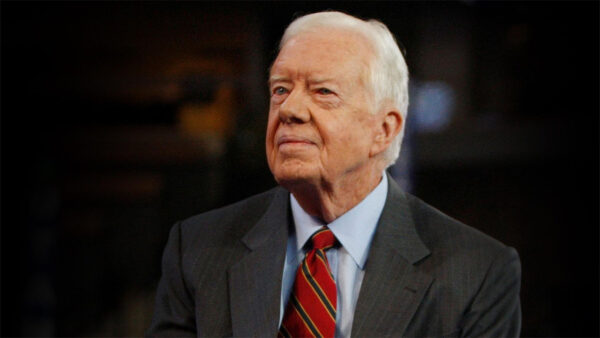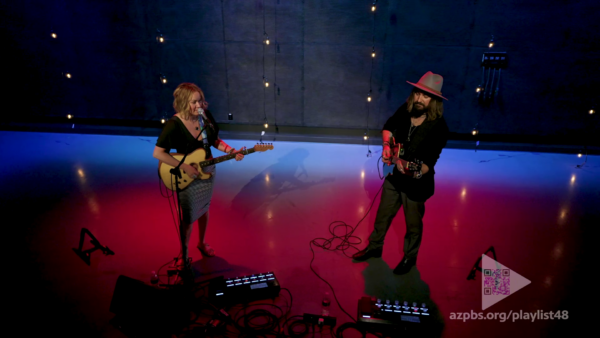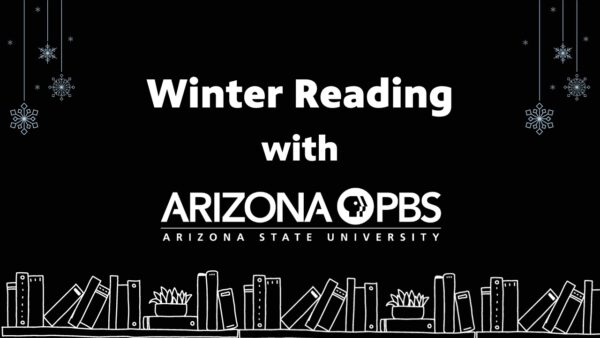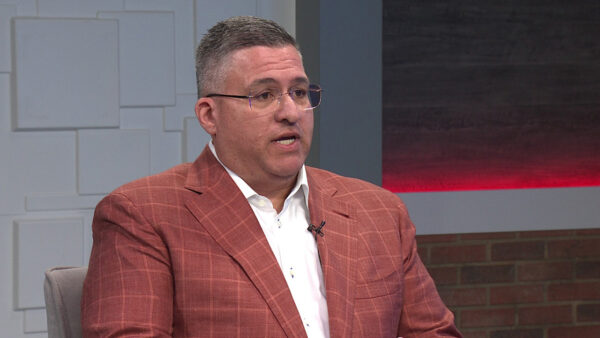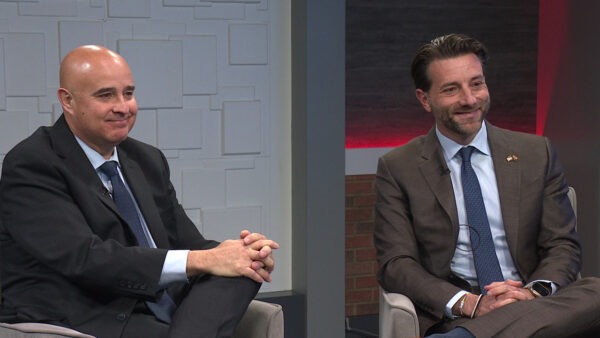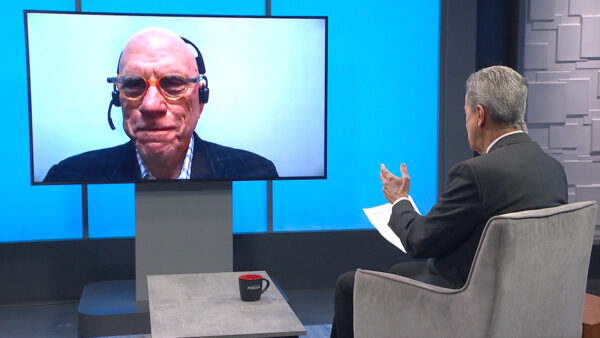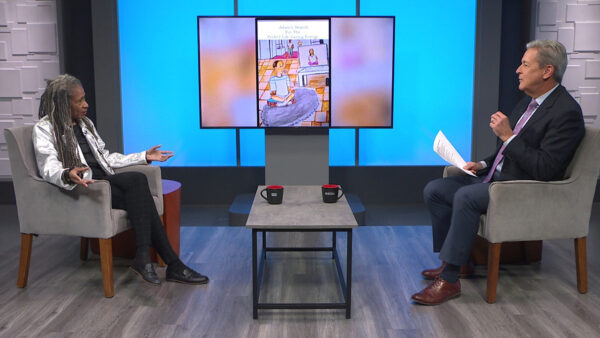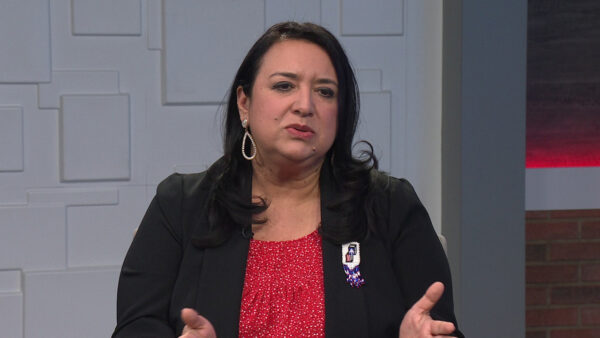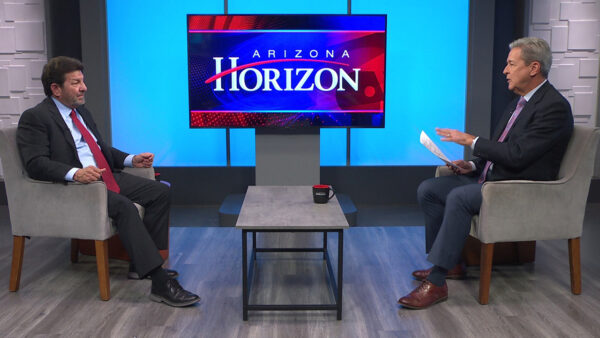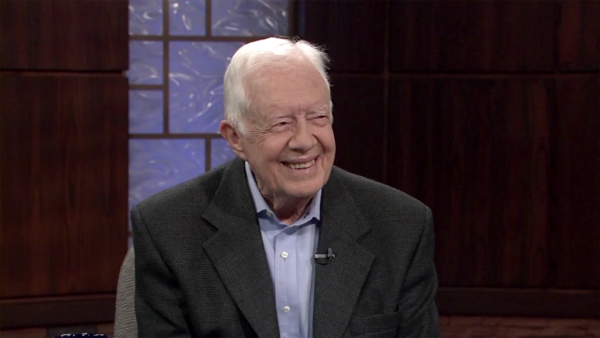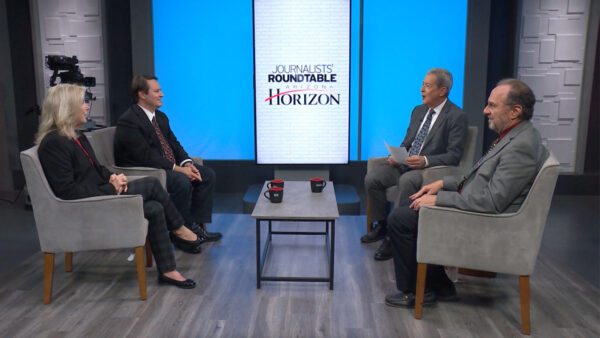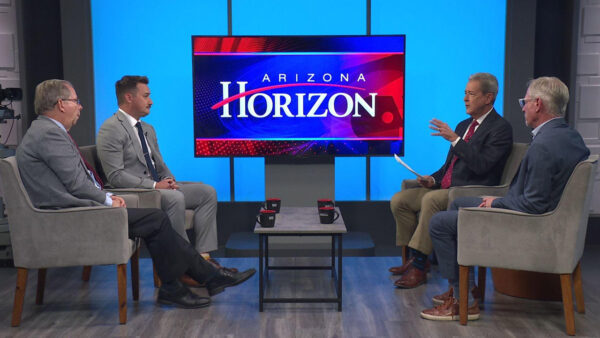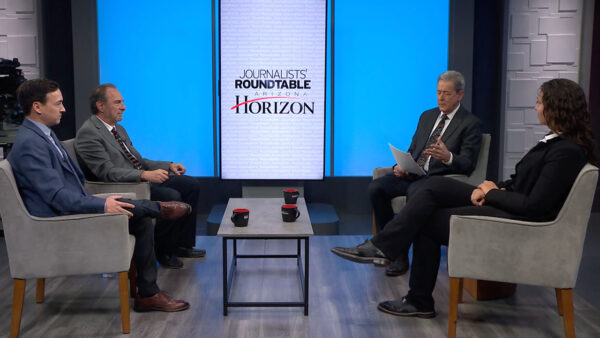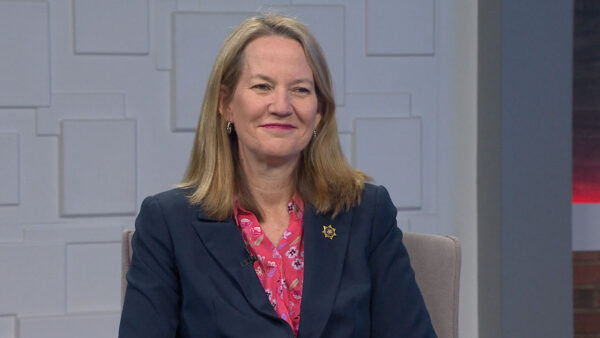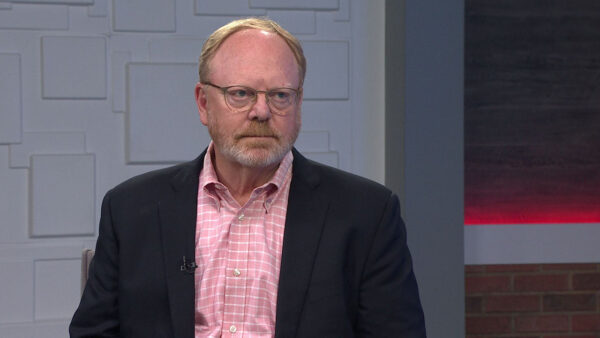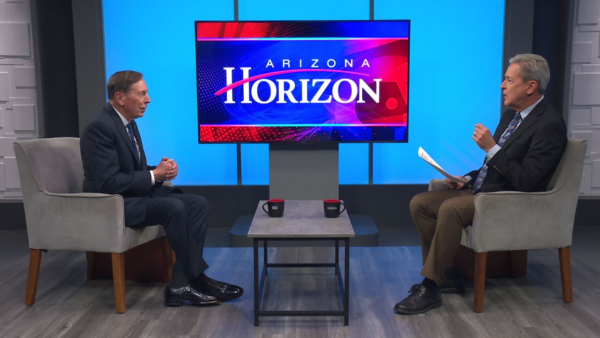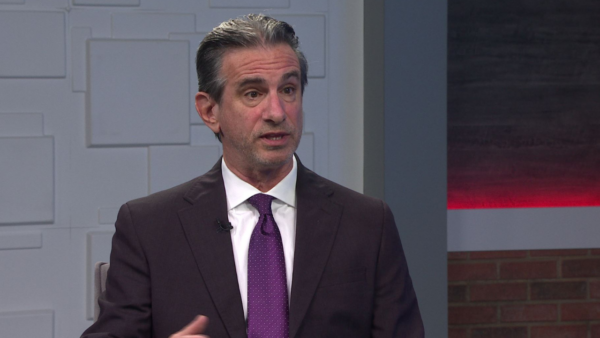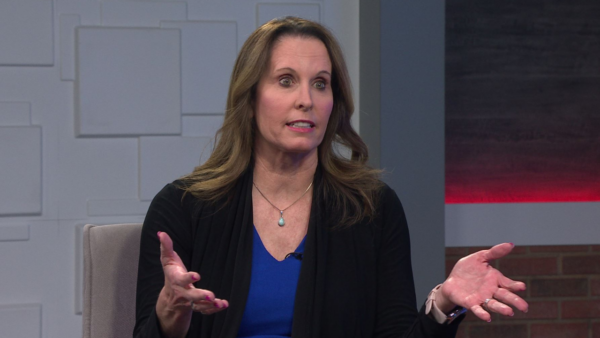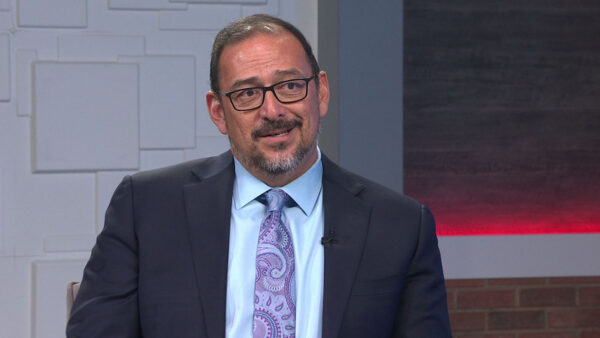Hear the story of an Arizona State University American Indian student and her adjustments to a university education. Then we will discuss the challenges and resources available to American Indian students with Bryan McKinley Jones Brayboy, ASU president’s professor of Indigenous Education and Justice and director of the Center for Indian Education, and Jacob Moore, ASU Assistant vice president for Tribal Relations.
TED SIMONS: In tonight's edition of Arizona Education, we focus on efforts to get more Native American students into college. We begin with producer Christina Estes and photographer Langston Fields introducing us to an ASU student who is on the road to success.
CHRISTINA ESTES: Marlena Peshlakai is the first to admit that she has changed.
MARLENA PESHLAKAI: Over the years I have seen myself grow as an individual and I have also had recent encounters, oh, my God. You changed. I remember you as a freshman. You were shy. Didn't really want to talk.
CHRISTINA ESTES: Before coming to ASU, population 80,000, Marlena spent her life in Shiprock, New Mexico -- population 8,000.
MARLENA PESHLAKAI: I lived in a very rural area and I grew up when I was little without running water and electricity until I was a sophomore in high school, and that's when I actually got running hot water and electricity. So, for me, adjusting like to a very busy city in Phoenix, it was really hard for me because I wasn't used to all of the noise and just it being so busy. So it was a lot of adjustment for me.
CHRISTINA ESTES: She was a little more prepared thanks to ASU's American Indian student support services. Before her freshman year, Marlena spent a couple of weeks on campus.
MARLENA PESHLAKAI: It was really helpful because I actually got to meet other Native American students, and it created like a bond and friendship. To this day we still all talk to each other.
CHRISTINA ESTES: Marlena credits Vicky Baldwin, her ASU mentor.
VICKY BALDWIN: We will definitely needing performers for that.
CHRISTINA ESTES: Over the past four years, Vicky offered advice and encouragement.
VICKY BALDWIN: Are you going to apply for the AIS scholarship again?
MARLENA PESHLAKAI: Coming from a high school that was primarily just Navajos there, it was a really big adjustment for me going to a very diverse type of setting.
CHRISTINA ESTES: Marlena has shared her story to younger students across Arizona. As part of the Trial Nations tour, she and other ASU students visited schools to promote the college experience.
MARLENA PESHLAKAI: It was surprising, because some kids at the end of our presentations, they would come up to us and some of them actually cried and they were telling us like, "I'm going through the same thing." For them, it was kind of like empowering moment because they now it was possible for them.
CHRISTINA ESTES: Marlena never thought she would end up in the nation's capital, but that is where she landed two months interning for the Social Security Administration.
MARLENA PESHLAKAI: It was a really life-changing experience. Especially adjusting from the west coast to east coast and I actually got to work on a presentation for the executive directors there. So that was a really -- it was a really great moment and one of the directors actually approached me and after my presentation she told me -- I didn't know if she was one of the executive directors and she told me that I was a well spoken person and it really made me think wow, I have come so far. Like with everything that I have been through, that I am able to do what I set my mind to, and that I can -- if I just keep pushing myself and believing in myself, that I'm able to do anything that I want to do.
TED SIMONS: Marlena will graduate this spring with a degree in Health Education and Health Promotion. She wants to attend graduate school and work with tribal communities to help lower the rate of diabetes. Here with more on efforts to improve American Indian involvement in higher education is Bryan McKinley Jones Brayboy, ASU president's professor of Indigenous Education and Justice and director of the Center for Indian Education, and Jacob Moore, ASU Assistant vice president for Tribal Relations. Good to have you both here, thanks for joining us.
BOTH: Thank you for having us.
TED SIMONS: Challenges facing American Indian higher education students… What are they?
BRYAN MCKINLEY JONES BRAYBOY: The research says there are four primarily issues. One is lack of finances, the cost of college. There is an issue around lack of role models, how many teachers are there at institutions of higher education who are American Indian teachers. There is a lack of academic preparation which continues to be an issue - what's happening in the K-12 environments. And then the fourth is around cultural incongruities and what's the difference between where students live and then coming to an institution that's the size of ASU - how do they make that transition.
TED SIMONS: What do you see as far as challenges and the concerns you hear not only from students but from parents?
JACOB MOORE: You know, it's quite a transition, particularly if they're coming from a rural community. We live in a state that has 22 tribal nations scattered throughout the state - from every corner of the state. And some of them are extremely remote and rural communities with cultural differences. They are sovereign nation, tribal nations, and I think coming to the university brings a whole set of different circumstances, and obviously they think parents are encouraged to send their students to get a higher education that is a pathway to success. But it also means that they're participating in a system that is not necessarily where they came from. And so there is this transition and this need for us to provide that additional support.
TED SIMONS: What kind of support do you offer?
JACOB MOORE: So the support that we offer, we have American Indian student support services, basically offers wrap-around services, being able to ensure that they have a place where they feel comfortable. The university can be pretty intimidating for any student as a result of the size of the university. So I think it is an opportunity for us to be able to make them feel more at home and give them the support that they need.
TED SIMONS: I would imagine something as simple as making connections when you get on campus, that's huge.
BRYAN MCKINLEY JONES BRAYBOY: It's crucial. I think if you look at the research on higher ed, for all students, but especially for native students, fundamentally it's about good relationships - how do you connect. In this piece we just saw with Miss Peshlakai, her connection with Vicky Baldwin at American Indian student support services, one of those things that you can begin to tie to the notions of success. If you have good relationships between students, staff, faculty, even good relationships with each other, we see positive results. When we don't see positive relationships, often students are leaving the institution.
TED SIMONS: I would imagine with all students, but for kids who may see a cultural challenge -- first time away from home, that has to be big, too.
BRYAN MCKINLEY JONES BRAYBOY: I think it's tremendous. One of the programs that we offer, that American Indian student support services has is a bridge program in the summer. Students come two weeks early. They get course schedules. They learn how to use their meal plans. They move into the dorm rooms that they're going to use. They make friends. They begin to make the transition so that when they start school, they're able to focus on their school work rather than on some of the social and structural constraints.
TED SIMONS: Do you hear -- do some of the kids feel pressure, whether it's deserved or not, to represent their community? They have a lot of other folks watching and rooting for them and they feel pressure from that.
JACOB MOORE: Sure, absolutely. And in fact a lot of them are some of the very few that made it that far. If you look at the statistics in terms of those that started eighth grade together, those that graduate from high school is about 60%. And those that move on to some form of higher education, the research that Dr. Brayboy has done is about 21% going on to some form of higher education. And those that graduate with an undergraduate degree is anywhere from about two to seven percent of that original class that started eighth grade together. So -- tremendous pressure, but also, grit, I think, is one of the things that we see -- that these students are able to succeed. And a lot of it is also based on the concept of reciprocity -- that they're very connected to wanting to come home. The majority of the students have some expectation that they want to get their education and return back to the community. And provide a service, and, so, that is a lot of pressure.
TED SIMONS: Do you see that as well, the idea of I'm here, doing my work, but home is still probably more home than it is for the average ASU student?
BRYAN MCKINLEY JONES BRAYBOY: Absolutely. And I think that part of this issue is that there's some pressure, but there's also a real sense of responsibility. So part of what the research shows, which I think is really interesting, is for those American Indian students who are successful in higher ed, they often report that they have a commitment to their communities, to their tribal nations, to larger community. When they finish, we find they're deeply engaged not just in their own community, but actually in larger society.
TED SIMONS: Let's talk about the commitment of the community to these kids. You referred to K-12 education concerns earlier, what needs to be done? What reforms have to happen?
BRYAN MCKINLEY JONES BRAYBOY: I think we have to do a number of things. One is I think we have to take a pretty close look at how we're looking at whether or not students are successful or not. I think one of the ways that ASU potentially plays into this and other institutions of higher education is how are we preparing teachers to work with communities. There seems to be a problem, if you look at numbers that Jacob mentioned earlier, I think that we have very few students actually going to college. We need more native teachers who are from that place, who understand the lives of students so that they could help work through that. So I think structurally, we have to think about who the teachers are and begin to think about what is the role of school in imagining futures for students. So I think we have a little bit of work to do to say education is really a good thing and helps build nations in particular kinds of ways.
TED SIMONS: How do you see that as well? K-12, getting them graduated from high school and perhaps into college and then graduated from higher education. What improvements need to be made?
JACOB MOORE: You know, it is a pipeline, it's a system that starts with early childhood into K-12, into higher education and many of it. Much of it I think is about relevancy. I served on the state board of education for eight years, and we do see the challenges that we have in our tribal communities. And a lot is based on standards - part of the question is by who's standards? If they come from tribal communities, they come from perhaps a different understanding. We take for granted the idea of the cultural competency within our own communities, that's taken for granted in the mainstream. That might be different coming from a student in a different community. How do we create relevancy within the curriculum, having teachers that represent their communities, having role models. But more importantly, I think in the long run, it is what is good for our tribal communities is also good for the state, and we do want to give President Crow credit for the amount of support getting to the students. Because we know that if they're successful, not only the tribal community is successful but the state is successful as well.
TED SIMONS: It sounds like good things are happening and improvements are being made. Good to have you both here, thank you so much for joining us.
BRYAN MCKINLEY JONES BRAYBOY: Thanks for having us.
JACOB MOORE: Thank you very much.
TED SIMONS: Tuesday on Arizona Horizon, hear about a new initiative to improve vision screening for the state's children. And best-selling author James Rollins joins us to discuss his new book. That's at 5:30 and 10:00 on the next "Arizona Horizon." That is it for now. I'm Ted Simons. Thank you so much for joining us. You have a great evening.
VIDEO: "Arizona Horizon" is made possible by contributions from the friends of Arizona PBS. Members of your PBS station. Thank you.
PAUL J. LUNA: Education foundation is proud to underwrite Arizona education, 12 months series highlighting the issues affecting college and career readiness of our students. Working to change lives and strengthen communities through education.
Bryan McKinley Jones Braybo: ASU president's professor of Indigenous Education and Justice and director of the Center for Indian Education,Jacob Moore: ASU Assistant vice president for Tribal Relations.
